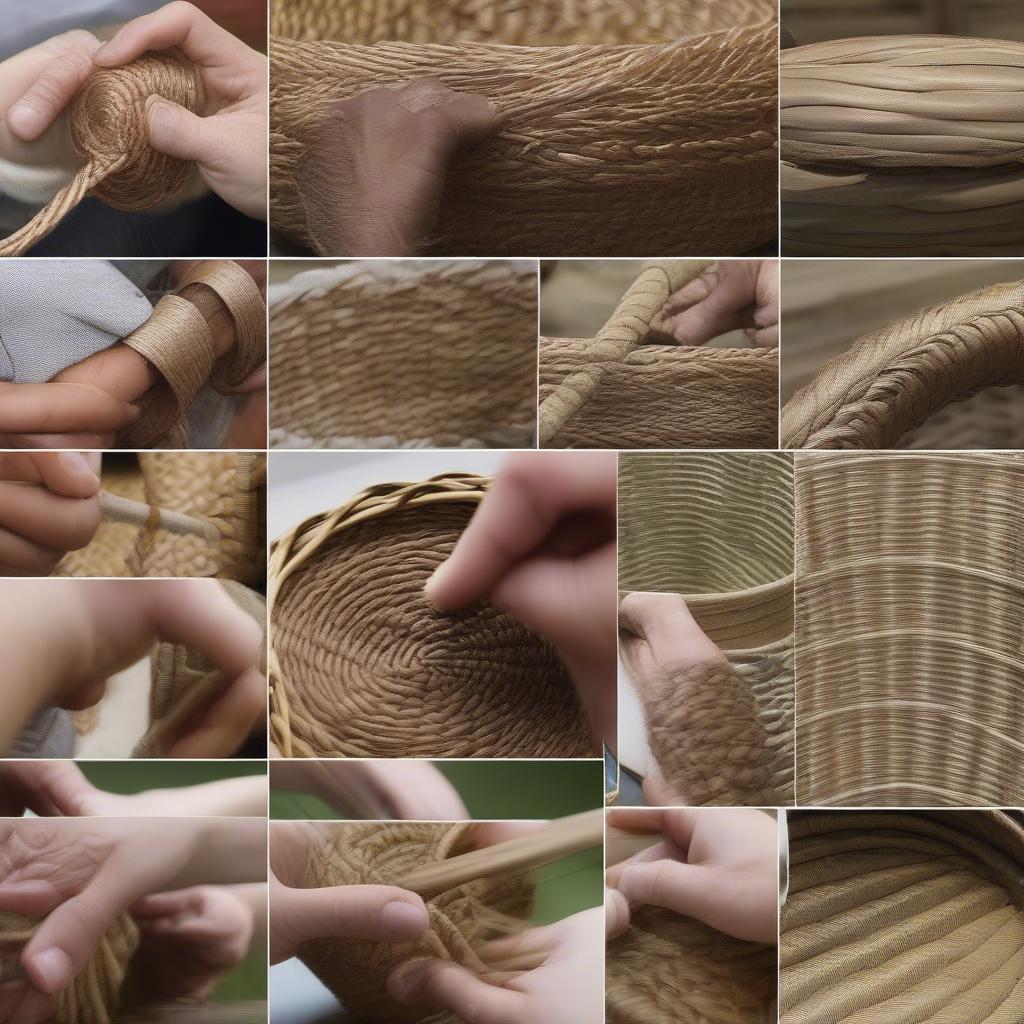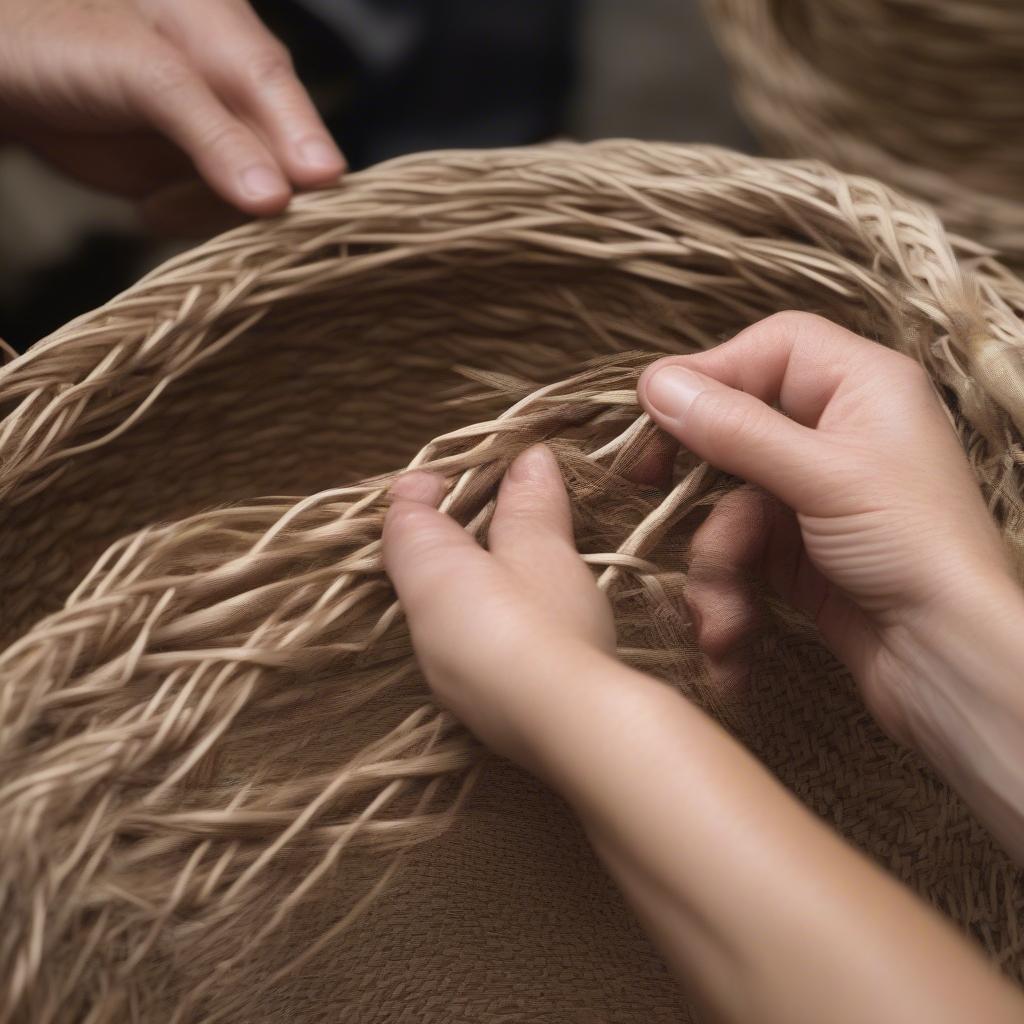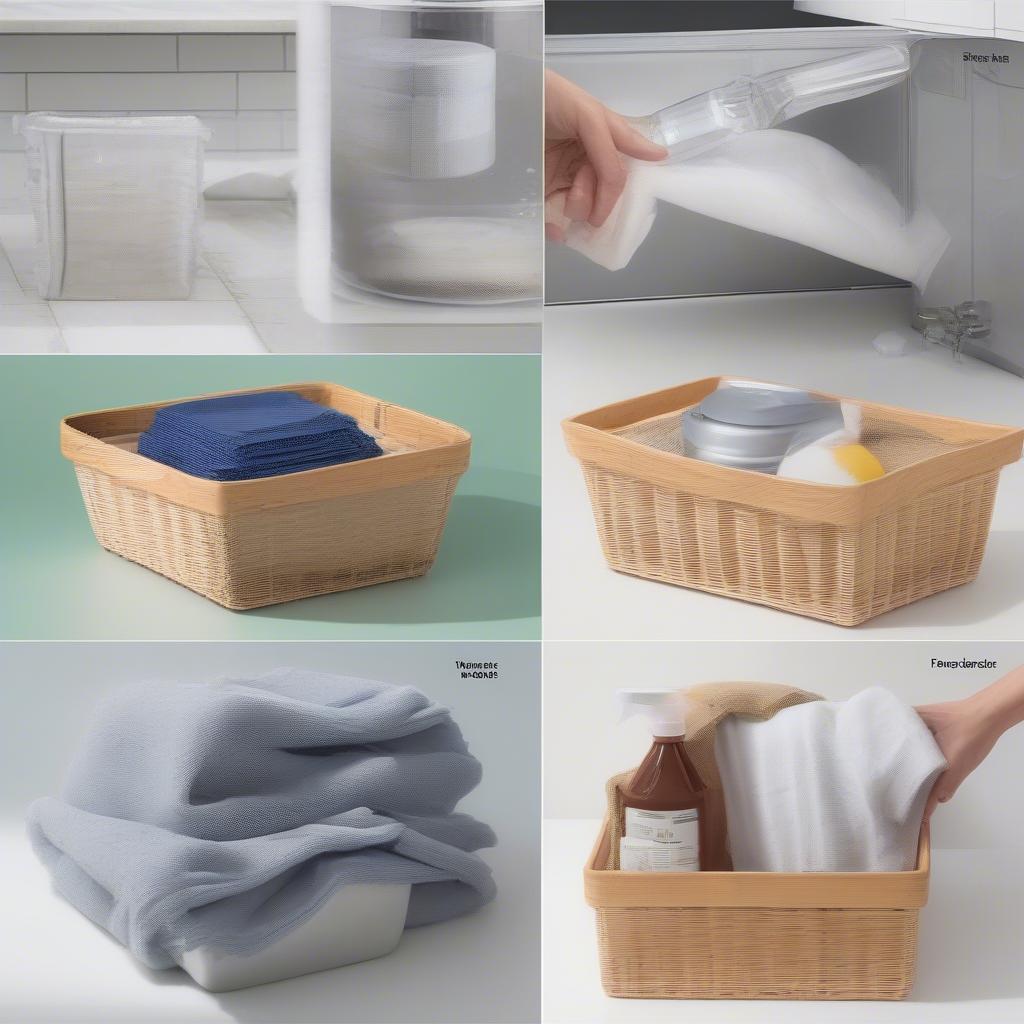Basket Weaving
Mastering Watertight Basket Weaving: Techniques and Tips
Watertight Basket Weaving is a time-honored craft that combines functionality with artistry. From ancient civilizations using woven vessels for storing grains to modern artisans creating stunning waterproof baskets, this technique offers both practicality and beauty. This comprehensive guide explores the intricacies of watertight basket weaving, covering essential materials, techniques, and tips to help you create your own durable and beautiful waterproof creations.  Various Techniques for Watertight Basket Weaving
Various Techniques for Watertight Basket Weaving
Choosing the Right Materials for Watertight Basket Weaving
The success of watertight basket weaving hinges on selecting appropriate materials. Natural fibers like willow, cedar bark, and sweetgrass are traditionally favored for their flexibility and durability. weaving watertight baskets requires materials that can withstand moisture without compromising structural integrity. For instance, tightly woven willow reeds create a naturally water-resistant barrier. Other materials, such as waxed linen or even synthetic cordage, can be incorporated for added waterproofing. The key is to choose materials that are both pliable enough for weaving and resilient enough to resist water penetration.
Exploring Natural Fibers for Watertight Baskets
Natural fibers provide a unique aesthetic and offer excellent watertight properties when woven correctly. Reed, rush, and cattail are commonly used, each possessing unique characteristics that lend themselves to specific basket weaving styles. The tightness of the weave, combined with the natural properties of these fibers, creates a barrier against moisture.
Weaving Techniques for a Watertight Seal
Several weaving techniques contribute to creating a watertight basket. Tightly packed coils or plaits, combined with careful attention to the rim and base, are crucial. The twining method, using two weavers passed around a stationary spoke, is particularly effective in creating a close, water-resistant weave.  Close-up of the twining technique used in watertight basket weaving Another important aspect of watertight basket weaving is the use of natural sealants.
Close-up of the twining technique used in watertight basket weaving Another important aspect of watertight basket weaving is the use of natural sealants.
The Art of Twining for Water Resistance
Twining is a versatile weaving technique renowned for its ability to create a strong and watertight structure. By meticulously interlacing two wefts around the basket’s spokes, a dense fabric is formed. This dense weave prevents water from seeping through, making it ideal for creating baskets intended for holding liquids or for use in damp environments.
Sealing Your Watertight Basket
While a tight weave provides inherent water resistance, adding a sealant can further enhance your basket’s waterproof capabilities. Natural sealants, such as pine pitch or beeswax, have been used for centuries. These not only repel water but also add a beautiful finish to the basket. Modern sealants, like polyurethane or marine varnish, provide a durable and long-lasting waterproof barrier.
Natural Sealants for Traditional Watertight Baskets
Traditional basket weavers often relied on natural sealants to enhance the watertightness of their creations. Pine pitch, carefully harvested and processed, creates a remarkably effective barrier against moisture. Beeswax, another natural option, offers water resistance while adding a warm, honey-colored sheen to the basket.
“A good sealant can be the difference between a water-resistant basket and a truly watertight one,” says renowned basket weaver Emily Carter. “Choosing the right sealant depends on the type of basket and its intended use.”
how to weave a watertight basket requires patience and attention to detail, but the rewards are well worth the effort.
Maintaining Your Watertight Basket
Proper care and maintenance are essential for prolonging the life of your watertight basket. Avoid prolonged exposure to extreme temperatures and humidity. Clean your basket regularly with a soft cloth and mild soap, ensuring it dries thoroughly. If using a natural sealant, reapply periodically to maintain its effectiveness.
“Regular cleaning and proper storage are crucial for preserving the beauty and functionality of a watertight basket,” advises experienced artisan John Miller. “Treat your basket with care, and it will serve you well for years to come.”
 Proper Care and Maintenance of Watertight Baskets
Proper Care and Maintenance of Watertight Baskets
Conclusion
Watertight basket weaving is a rewarding craft that combines practicality and artistic expression. By selecting appropriate materials, mastering essential weaving techniques, and using effective sealants, you can create durable and beautiful baskets that stand the test of time. With careful maintenance, your watertight basket will be a treasured possession for years to come. So why not dive into the world of watertight basket weaving and discover the satisfaction of creating something both functional and beautiful?
FAQs
- What are the best materials for watertight basket weaving?
- How can I make my basket completely watertight?
- What are the different weaving techniques for creating a watertight seal?
- How do I care for my watertight basket?
- What are some common mistakes to avoid in watertight basket weaving?
- Where can I learn more about watertight basket weaving techniques?
- What are some traditional uses for watertight baskets?
Hanoi, Vietnam or Tech Avenue, Suite 12, San Francisco, CA 94105, USA. We have a 24/7 customer support team.
